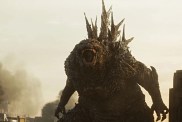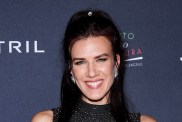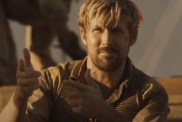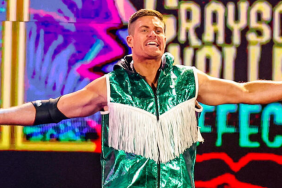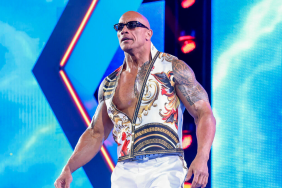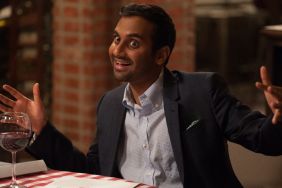
Names many people seem to forget are those of the producers and while at the press junket for The Dark Knight we spoke with Emma Thomas and Charles Roven, both producers of the film with plenty to say about the cast, the crew, the locations, the ups and the downs.
Thomas is not only a producer on the film she also doubles as director Chris Nolan’s wife and has produced all of Nolan’s films including Memento, Insomnia, Batman Begins and The Prestige. Roven has produced several films you would have heard of as well, including the recently released Get Smart and The Bank Job as well as Twelve Monkeys and is currently set to bring The Flash to the big screen should it ever come to pass.
Check out what they had to say.
Can you talk about casting Heath Ledger as the Joker and working with him?
Emma Thomas (ET): Casting him, he was one of the first of the new roles cast for the film. We didn’t even have a script yet. It was very early days. But Chris had met with Heath at various points over the past few years on a couple different things and it never actually worked out that they worked together. When I think Heath heard that the Joker was in the film, he had an idea of what he would do with that and we heard from his agent that he was interested so Chris met with him even though it was very early days. They had a great meeting and were completely on the same page as to what the character could be in Heath’s hands. So that was that. And working with him was just a dream, he was an amazing professional and a really great guy.
Did you think he was going to bring, I mean he created such a great character, were you surprised?
Charles Roven (CR): We could tell from the dailies or even from just being on the set that he was throwing himself into this. And one of the reasons we were so interested in working with him is because if you take a look at his body of work before The Dark Knight you can see the different characters that he plays, he completely embraces – he’s fearless about it. That’s the best way to describe how he throws himself into his performances. We felt that if he was going to do that for this role it would be really staggering to watch.
The film has had buzz for over a year from Comic Con on. Was there a plan of how slowly you’d roll out and exactly how much you’d show of Two-Face, the thought process.
CR: We definitely knew from the last time that there would be a tremendous desire, especially from the core fans, to get as much information as they possibly could, as quickly as they could. So we definitely talked about trying to, in some fashion, manage putting out the different assets that we have, stills or film footage or whatever in an effort to create the proper ramp up for the opening of the picture. We knew that it was going to be this way even before we started shooting. Even when we started shooting, before we brought out the first picture of Heath as The Joker, there was constant information out there that…people doing their own versions of what Heath would look like and saying what our film was. The same thing happened with Two-Face and our first trailers. We knew that one of the things we needed to do as producers and the studio needed to do was to keep the information as confidential as we could even though that wasn’t perfect and to let it out in somewhat of a mannered way.
Can you talk about the logistics of shooting on location in Chicago for all those months and the cooperation you might have gotten from the city, the weather that might have interfered and anything else you had to deal with.
ET: Chicago was amazing. We had had a very good experience shooting there on Batman Begins, but we were only there for three weeks or something on that movie. This movie was about four months.
CR: 12 weeks I think we were there
ET: That’s a big ask of a city. We we’re having to close down streets. It’s a big deal. But they were absolutely incredible and welcomed us with open arms and gave us all the help that we needed.

Which was the toughest sequence to get completed on location?
BOTH: The car chase.
ET: In terms of the weather, getting back to that question, we were very lucky that we were there in t the summer so it’s good weather. It’s very hot during the day but we were shooting at night much of the time so it was kind of perfect.
CR: The only problem with the night was the nights were short because it’s summer
You had to wait till 8:00?
CR: We had to wait till even later, almost 9:00 and it was starting to get light by 4 in the morning.
Did anything unforeseen crop up?
CR: The city of Chicago did extraordinary things. They let us take over their financial district at night as long as we were safe and they made sure that we were. They were fantastic to us. We had one day where we had the Bat-Pod coming out of an alley and coming onto the street, and it created a huge sonic boom that bounced off the walls of the building and blew out a bunch of windows. That was not planned. But that was the only mishap. But because they were so great to us, we made sure that we honored that and we mobilized…I think they’re called glaziers, the guys who put the windows in, we had them mobilized and working and within 24 hours we had fixed every window.
Did you plan on the IMAX from the very beginning? Can you talk about the genesis of using it and using it in as much of the film as it’s in?
ET: Chris has wanted to work in IMAX for years. I can’t even remember the first time I heard him talking about it, but it was a really, really long time ago. He’s been waiting to find the right project that he could do it on. Right at the beginning when we first started developing this project, he came to us and said ‘This is the way I want to do this. This is one of the ways I want to expand this movie and make it the biggest film-going experience it can be.’
Did you think it was feasible?
ET: It had never been done in the way that we’ve done it before, so everyone had a lot of questions. So we just all did a lot of research, came up with a really tight production plan for how we would do it. The prologue, we went out and shot that in December, a month before we actually started shooting proper. It was like a test thing.
CR: We shot tests before
ET: We shot tests way before that as well
Where did you do those?
CR: Here in L.A. on the streets. Part of it was on Sunset Blvd, part on Hollywood Blvd
Does it make it more expensive to use IMAX?
CR: Oh yeah. Definitely. We originally thought that it was going to add about $8 million
Did it?
ET: A lot less.
CR: Actually we absorbed it in our budget at the end of the day.
Did you come in at budget or under?
BOTH: Under.
Is there anything that wasn’t filmed?
CR: No, the only things that we ended up not shooting were things that we felt for some reason at that point in the process of the moviemaking we just didn’t need to tell the story.
I admired that there wasn’t a single action scene that felt slapped on – it’s integral to the plot. Any comments on that?
ET: One of the great things about working with a writer-director like Chris is at script stage he’s thinking about how he’s going to shoot that. That means that it’s all much more organic and it feels much more integrated into the story as a whole. That’s my take. What do you think about that?
CR: I agree, because the story itself has got a lot of complexity to it, and yet it’s told within this incredible fast-moving action genre but it’s really much more than that. The story is serving the action set pieces and the action set pieces are serving the story. Actually, one sets out to do that all the time but doesn’t accomplish it all the time. But when you’re working with somebody like Chris you can get that result.
What about Hong Kong? What was that experience like and how cooperative were they? A different animal from Chicago, I’m sure
ET: That was the point of the movie where I wasn’t around because I was having a baby.
CR: We knew that we wanted to be in Hong Kong and shoot in Hong Kong way early in pre-production so from the time that we scouted it…Chris went there and did some writing first of all, he likes to get out of town and be inspired.
This was when?
ET: October, November 2006.
When did you go back to shoot?
CR: November of 2007. So we made our first scouts shortly after he came back. We scouted it, we scouted it with him, then we went back and scouted without him, and it took us about nine months to get the permits to shoot there, because what we were doing there was complicated and we were doing it in very highly populated centers and a lot of it had to do with big action set pieces with a lot of vehicles. You know Hong Kong is very small, it’s population-intensive. But at the end of the day, it was fantastic. I’ll tell you one great story. When we were up by the elevated train, we were shooting in one direction and behind us must have been 15-20,000 people watching us. They were in the windows, they were on the roofs, all looking. They treated every aspect of our being there like we were celebrities and they were hanging on everything. We finished shooting in one direction and I went up to the Chinese First A.D. and said, “How the hell are you going to get the people behind us to move, because we’ve got to shoot in that direction now?” He said, “It won’t be a problem,” and he turned around, walked over, said a couple of words in Chinese and they were gone! It was amazing.
Do you know what he said to them?
CR: I don’t know, they were speaking in Chinese. They just left. It’s like they didn’t want to be intrusive. They wanted to watch but they were all very polite and everything.
You can also read our interview with Maggie Gyllenhaal here and be sure to stay tuned for Christian Bale, David Goyer, Jonathan Nolan, Gary Oldman, Aaron Eckhart and Christopher Nolan. We also have a Dark Knight giveaway you can sign up for right here.

